Disaster Readiness and Relief
Why we all need to slow down for Julia
September 15, 2010
Jody Siegler lost her 13-year-old daughter—and found, “in the midst of all this pain and despair,” a path to action.
On Thursday morning, that path will lead her back to the corner of Sunset Boulevard and Cliffwood Drive in Brentwood—back to where her daughter Julia, an 8th-grader at Harvard-Westlake, was run over as she crossed the street to board her school bus.
There, Jody Cukier Seigler will step into her own as an activist, determined to make the world a safer place, one intersection at a time.
Siegler, who had just dropped Julia off and was there when she was struck by two cars, will join police and elected officials for the kickoff of a safety campaign called “Slow Down for Julia.” She’ll honor and thank the young people who jumped into action within hours of Julia’s death and set in motion the safety campaign.
“I feel very, very transformed. I’ve been given a responsibility,” Siegler said in an interview, reflecting on all that has happened in the difficult months since her daughter’s death on Feb. 26.
She knows that she wants to set up a memorial in Julia’s name. She knows that she wants to crusade for strict enforcement of speed limits and for better visibility on streets where overgrown vegetation can obscure sightlines and block signage. And she knows that drawing public attention to her family’s personal tragedy is a necessary part of fostering the civic engagement required to get such changes made.
The horrific accident that claimed Julia’s life occurred after she stepped out into traffic against a red light and was struck by two cars, one after the other. No charges were filed against either driver.
Despite all Jody Siegler has had to endure, she is deeply focused on what others have done to honor her daughter. She rattles off name after name of those who have stepped up, from the students who created a Facebook memorial and painted a purple “Slow Down for Julia” bus bench to the rabbi at University Synagogue to the people at her local print shop.
“People behaving impressively is really worthy of our attention,” she said.
 Her ongoing relationship with her daughter’s classmates and friends has been a revelation—and cause for hope about perhaps helping to spawn a new generation of activism around the tragedy of Julia’s death.
Her ongoing relationship with her daughter’s classmates and friends has been a revelation—and cause for hope about perhaps helping to spawn a new generation of activism around the tragedy of Julia’s death.
“The emotional DNA of her peer group has been changed forever” by the accident, she said.
“Kids still come to my house. I’m amazed that they come through my front door. They’re brave. I applaud them.”
Along with her husband, Scott Siegler, a media investor, she’s continually struck by the connections their daughter forged during her short life. “We knew that she was extraordinary. We didn’t know quite how far and wide it went.”
For herself, there are “the good days and the bad days.” She has a hard time sleeping; early wakeups are a challenge. And she is steadfastly working her way through all the boxes of letters she received after the accident.
“I have been diligently replying to every single person,” she said. She created a card, adorned with photos of Julia in different stages of her life and incorporated into it a single shoelace (purple, Julia’s favorite color) and the words: “One purple shoelace to remember her spirit, one missing to remember why.”
She’s still working out exactly where to focus her energies. “Where will it be most effective? What’s biting off more than I can chew?” But she likes the idea of small actions adding up to big results. “It has to be individual acts for getting things done,” she said.
Donations, including those raised by Julia’s classmates’ sale of $3 purple bracelets reading “Slow Down for Julia,” could ripple out in an ever-widening circle—resulting in improvements not just at Sunset and Cliffwood but beyond.
“I told the boys that with the money we raise—what if we go help another corner?” Siegler said. “What if Julia and what happened here helped a corner somewhere else?”
Capt. Nancy Lauer, commanding officer of LAPD’s West Traffic Division, said she admires Siegler’s willingness to step into the public arena in the interests in improving public safety, especially for schoolchildren.
“She’s suffered a tremendous loss. I have a great deal of respect for her courage and fortitude,” Lauer said.
A one-time movie marketing executive, Siegler, now an interior design and remodeling consultant, knows what it is to find that “relatable crumb” that hooks the public’s interest in a project. And she knows that her own loss has forever altered the trajectory of her life.
“My purpose has changed,” she said.
And like the Little Red Hen in the nursery tale, who industriously makes bread while trying to recruit helpers, she’s going out into the world looking for those willing to do the work that will make a difference.
“The world is either people baking the bread or eating the bread,” she said. “I’m looking for a few good bakers.”
Posted 9/15/10
New network to link first responders
August 10, 2010
The Board of Supervisors made a down payment Tuesday on an ambitious plan to link all of the region’s police, fire and emergency workers under a single, shared digital communications umbrella.
The Los Angeles Regional Interoperable Communication System—LA-RICS for short—aims to become the crucial communications infrastructure that connects more than 34,000 first responders and allied personnel in the Los Angeles region.
LA-RICS is a Joint Powers Authority set up in 2009 by the county and city of Los Angeles and 81 other local cities. The new voice and data radio system, to be linked with fiber optic cable, microwave antennae and other links, would replace the current patchwork that often makes communication between law enforcement and fire agencies difficult.
The new system should also make communication possible between dozens of fire and police agencies that gather to fight large-scale disasters, from 9/11 to Hurricane Katrina to Southern California’s large scale fires and earthquakes.
“When we have a disaster in this area, we’ll be able to communicate with anybody,” Scott Poster, a deputy county fire chief who is LA-RICS’ interim director, said in an interview following the meeting.
The system, to be designed and built over the next three to six years, may eventually cost more than $500 million, according to a consultants’ report. Officials hope to obtain federal grants and other funding streams to pay for the system.
The Board’s action unanimously approved a first year’s budget of $17.76 million. Of that, $10 million is slated for early initial spending on the communications infrastructure, from radio gear to software. The remaining $7.76 million is earmarked for staff costs, consultants’ and experts’ fees and office space.
Supervisors’ approval of the down payment came with cost-sharing questions. They had been expecting a similar $7.6 million appropriation for staff costs from the city of Los Angeles, the plan’s other major partner. But city funding hasn’t materialized yet, leaving the county, at the moment, the sole provider.
“We’re being asked to pay the whole sum from our resources, when the city has resources and should be contributing,” Supervisor Michael D. Antonovich noted, to Poster and county Chief Executive Officer William T Fujioka. “How do you plan to ensure that we don’t subsidize the city of Los Angeles?”
Antonovich added an amendment to the measure instructing Fujioka to question Los Angeles officials in the next 30 days whether it plans to contribute funding for staffing and report back to the board.
Posted 8/3/10
Avoiding a brush with fire disaster
April 29, 2010
The big rains of winter mean a big explosion of vegetation come spring—which can mean big trouble when the inevitable wildfires hit Southern California. So homeowners in “wildland areas” can expect a visit soon from the Los Angeles County Fire Department, which is beginning brush clearance inspections of more than 39,000 homes on Saturday. (Inspections in coastal areas start June 1.) To stay on the safe side, check out the county’s brush clearance guidelines, download your own “personal wildfire action plan” prepared by the fire department as part of its Ready! Set! Go! program, and check out these videos. And then click on “A Road Map to Fire Safety: How to Create Defensible Space in the Santa Monica Mountains,” a new guide from the Fire Safe Alliance.
Posted 4/29/10
These streets weren’t made for truckin’
April 8, 2010
First came the rains. Then came the trucks, hundreds of them suddenly rumbling through a sleepy Sylmar neighborhood.
They arrived at a staggering clip of 250 an hour, hauling tons of dirt that had cascaded down hillsides scorched by the Station Fire and into rapidly filling debris basins. Bumper to bumper, the trucks inched through the residential streets and up a private road to an obscure L.A. County “sediment disposal site.”
Then they headed back 20 miles across town for more loads—day after day, week after week, from 7 a.m. to 7 p.m.
The goal was to make sure no lives or homes were lost to mudslides that could result from overflowing debris basins in La Crescenta and La Canada Flintridge, the communities most impacted by last year’s blaze. But the problem was that residents of the Sylmar neighborhood were blindsided by the dump truck gridlock that hit their streets after the downpours of early February.
“All of a sudden there was a non-stop procession of dump trucks,” said Gigi Lewis, a 10-year resident of the neighborhood, near the 210 Freeway and Roxford Street. “We were literally imprisoned in our homes. We couldn’t let the kids ride bikes in the street or take our dogs for walks. I was in shock.”
Only in recent weeks have the window-rattling, teeth-gnashing convoys eased back. On Wednesday, for example, just 90 trucks were cycling between the sediment site and areas near the Station Fire’s enormous burn area.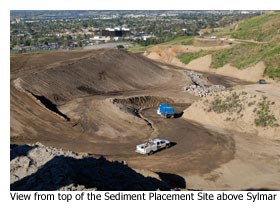
And more relief is on the way, thanks to a plan created by Supervisor Zev Yaroslavsky’s office and the Department of Public Works, which orchestrates the massive movement of earth from the county’s debris basins to its sediment sites (landfills, of sorts, for dirt).
This week, work began on a dirt road that will wind through vacant land mostly owned by the county and which skirts the small residential neighborhood. In a matter of days, all truck traffic will be routed along the new road, meaning peace (and quiet) is at hand for the community’s highly annoyed residents, many of whom say they were unaware that one of the county’s 25 active sediment placement sites was even on the hill above their streets.
Lewis, one of the highly annoyed, had a single word to describe the latest development: “Fabulous!”
The road’s completion also won’t come a day too soon for Paul Melillo, construction superintendent for the public works department. As the man responsible for the Sylmar site, he’s had an earful from residents. “They all know me,” he said with a hint of exasperation.
Melillo said he certainly empathizes with the homeowners who’ve endured weeks of noise, fumes and inconvenience. “I’d be upset, too,” he said. A 35-year veteran of public works, Melillo said he’s done his best to be visible to residents and responsive to their frustrations, while grappling with the fluidity and urgency of the operation.
“I tried to help in any way I could,” he said, “short of pulling the trucks off the street.”
Melillo recalled, for example, a woman who justifiably complained that she couldn’t get out of her garage in the morning because lines of trucks were always blocking her driveway. So, between 7 a.m. and 9 a.m., he positioned a worker near her house to cut a traffic break for her. “She was very appreciative,” Melillo said.
Public works department officials do acknowledge that they could have done a better job of letting the community know upfront what was headed their way—and why.
“The biggest lesson we learned was that we needed more effective communication with the residents,” said Bob Spencer, the department’s chief of public affairs. “This was a new situation for us. We were dealing with the worst fire in the county’s history.”
Spencer said the department was most focused on exploiting lulls between the storms to get debris basins in the burn areas quickly cleaned before more muck flowed into them. “In some instances, that had us working 24/7, with a fleet of more than 300 dump trucks. We recognized the pressure we were putting on the neighborhood but we needed to clean those basins to keep other lives and neighborhoods safe.”
Although the storm season has passed for now, the dangers—and the trucks—will likely be back for the next five years, according to Spencer. Each winter, debris will continue moving down the mountain into the basins until enough vegetation grows to help hold the soil in place.
Said Spencer: “We are definitely going to go through this exercise again.”
For Frequently Asked Questions (FAQs) about L.A. County sediment management, click here.
See what it was like at the traffic’s peak in February. Video Courtesy Gigi Lewis.
Posted 4-08-10
Images of Haiti from returning heroes
January 28, 2010
The LA County Fire search and rescue team that was hailed for its heroics in Haiti is on its way home. For a look at some of what they encountered and accomplished, click through this gallery of photos the team sent home and posted on Facebook. The team is expected to arrive in L.A. later this afternoon.
—————————————————————————————————————————————–
READ RELATED HAITI NEWS
Leading the charge from Malibu to Port au Prince
January 22, 2010
Battalion Chief Terry DeJournett commands the largest fire battalion in the Los Angeles County Fire Department, with 12 fire stations that cover the Santa Monica Mountains.
So what’s he doing in Haiti?
DeJournett, 55, is running the 72-person L.A. County urban search and rescue team that was rushed to Haiti last week in the wake of an earthquake that has left the nation in ruins. Already, the team has saved nine victims from the rubble, including three women buried under a collapsed Port-au-Prince apartment building and another who was pulled from the remains of a bank.
“The thing you get with Terry is defined leadership,” says Battalion Chief Thomas Ewald, who is directing from Pacoima the support of the Haiti mission. Ewald says DeJournett thrives as a tactical commander in the field.
The task force’s work has drawn international acclaim and attention, including a CNN interview (see below) Wednesday during which DeJournett praised the Haitian’s resiliency. “The fact that we are still making rescues,” he said, “shows the strength of the people here.”
Cathy DeJournett, his wife of 34 years, has taken comfort hearing her husband’s voice a few times during conference calls arranged by the department each night. “He’s enjoying being able to help people there so much,” she said. The family has two grown children.
The stress of having a firefighter spouse who travels to danger spots, Cathy said, “is something you get used to.” She said she draws confidence from the fact that “I know they are doing everything they can to take precautions.”
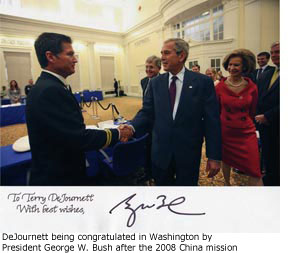 A 24-year County fire veteran, DeJournett joined the elite squad in 1991 and rotates the front-line leadership with a half dozen colleagues. He has traveled throughout the world. Less than two years ago, for example, he led a small rescue contingent to China following the Sichuan earthquake. On his return, he flew to Washington to receive congratulations from then-President George W. Bush. He also frequently travels abroad representing L.A. County and the U.S. in training missions in Asia, Europe, Africa and Australia.
A 24-year County fire veteran, DeJournett joined the elite squad in 1991 and rotates the front-line leadership with a half dozen colleagues. He has traveled throughout the world. Less than two years ago, for example, he led a small rescue contingent to China following the Sichuan earthquake. On his return, he flew to Washington to receive congratulations from then-President George W. Bush. He also frequently travels abroad representing L.A. County and the U.S. in training missions in Asia, Europe, Africa and Australia.
Closer to home, DeJournett , who performed rescue work during the 1994 Northridge earthquake and the 1995 Oklahoma City bombing, leads firefighting teams in the hills above L.A. He directed the assault on a portion of the Station Fire last summer, as well as during the Malibu fire in 2007. Since 2006, he’s been the Battalion 5 chief, overseeing stations stretching from Westlake Village and Malibu to Topanga and Calabasas.
“He runs a tight ship,” said his boss, Assistant Chief Gary Burden. “When he is on the scene, he gets a lot of respect because of his experience.”
How long DeJournett’s team will stay in Haiti remains unclear.
—————————————————————————————————————————————–
READ RELATED HAITI NEWS
A super Sunday for County rescuers in Haiti
January 19, 2010
Working throughout the night on Sunday, rescuers from the Los Angeles County Fire Department saved three Haitian women who had survived without food or water for five days, buried under a collapsed apartment building.
County firefighters reached the last of the three women—a 31-year-old found trapped on her bed in a tiny pocket below tons of concrete debris—at 7 a.m. Monday morning, capping a dramatic 14-hour operation by the Los Angeles County task force.
The three successful rescues brought to eight the number of earthquake victims saved by the task force since its arrival in Haiti last Thursday on a military C-17. Now dubbed USA-2, the 70-person task force has been divided into Red and Blue squads, each working independently throughout Port-au-Prince to free victims of the magnitude 7 quake.
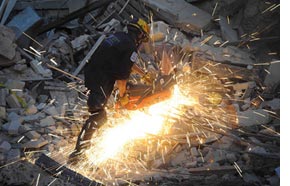
L.A. County firefighter saws rubble at a Port-au-Prince building Photo: U.S. Navy photo / Specialist 2nd Class Justin Stumberg
At 11 p.m., the work paid off. The rescue workers freed a pair of Haitian sisters, 18 and 20. Dehydrated and suffering minor injuries, the women were rushed to a makeshift Israeli-run hospital.
But the rescue operation wasn’t over. Through an interpreter, the sisters said that while trapped, they continued to hear noises made by someone buried below them. The County team renewed their digging through the night.
By daylight, the team had tunneled 15 feet deeper into the tons of rubble. They reached a two-foot-high cavity where an injured but conscious woman lay pinned against her mattress. She too was rushed to the Israeli hospital.
The three rescues capped a very successful Sunday for the task force. At mid-day, the Blue Squad extricated a 30-year-old Haitian woman who had been trapped waist deep in the shattered concrete of a downtown building.
Later Sunday afternoon, Red team rescuers freed a dehydrated 50-year-old woman from a collapsed bank building. “When she came out of the void, she was singing,” reported County Fire Battalion Chief Thomas Ewald, who leads the mission’s deployment support team, which is based in Pacoima and receives frequent satellite phone updates from the team in Haiti.
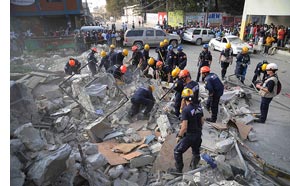
County workers clear rubble in downtown Port-au-Prince | Photo: U.S. Navy photo / Specialist 2nd Class Justin Stumberg
Things did not go so well on Saturday. The L.A. squad thought they heard sounds of life beneath the rubble at a day care center in the city. Specially trained dogs were brought to the scene but did not pick up a scent. As team members did their best to dig through the wreckage, the tapping sounds stopped. It is still unknown whether anyone actually had been trapped.
The mission to Haiti by the County task force is being fully funded by the U.S. government. Family members back home get updates through a nightly conference call by satellite phone, Ewald says. Thankfully, the news back home has all been good. Despite the dangers, the task force from Los Angeles is in good spirits and has suffered no injuries.
Other members of the task force include emergency room doctors, as well as logistics and communications specialists working to help local authorities improve earthquake response. The task force’s leader is Battalion Chief Terry DeJournett, who is stationed in Malibu when the search-and-rescue task force isn’t deployed.
The team is expected to continue their work in Haiti through the remainder of the week.
In addition, a team of doctors and nurses from Los Angeles County + USC Medical Center arrived in Haiti Sunday and began performing emergency surgeries.
READ RELATED HAITI NEWS
Next stop Haiti for L.A. County rescue team [updated]
January 13, 2010
An elite Los Angeles County Fire Department search and rescue unit prepared to fly to a devastated Haiti Wednesday night to aid victims of the magnitude 7 earthquake, helping fulfill President Obama’s pledge that “we stand ready to assist the people of Haiti.”
The 72-member heavy rescue team, called California Task Force 2, is one of two U.S. disaster teams now being rushed to Haiti to aid in quake recovery efforts. The L.A. County team is expected to fly out at about 9 p.m. Wednesday en route directly to Haiti. The other team, from Fairfax, Virginia, departed earlier Wednesday afternoon.
“It’s really an honor that we’re recognized as being ready, able and trained to respond to these disasters,” said Fire Chief P. Michael Freeman. “It’s nice to realize that our sphere of helping can be so far-flung.”
The Los Angeles County unit includes firefighters, paramedics, heavy equipment operators, search dogs and canine handlers, communications and logistics specialists and hazardous material experts. In addition to County fire personnel, the team will take structural engineers and three emergency-room doctors. The task force is packing more than 27 tons of medical and rescue equipment.
The L.A. team’s expertise includes rescue and recovery operations under fallen structures—like the thousands of collapsed and partially collapsed buildings in and around the Haitian capital of Port-au-Prince. The team won’t know its precise mission until it hits the ground Thursday, Freeman said.
The task force has a rich history. In addition to local disasters, such as the Northridge earthquake in 1994, the task force was dispatched to Oklahoma City following the 1995 bombing, New York City after 9-11 and the Gulf Coast following Hurricane Katrina in 2005. Overseas, the task force flew to Sri Lanka in 2004 to aid victims of the Indonesian tsunami. A small unit took rescue equipment to China to dig out of the 2008 Sichuan earthquake
Firefighters who want to join the team must take training courses on their own time—on top of their normal duties. The department maintains a practice center with concrete debris at its Del Valle training facility near Santa Clarita. “Two years ago,” Freeman said, “we actually had United Nations experts visit us for two days to certify us for urban search and rescue.”
How long the Los Angeles team will remain in Haiti isn’t yet clear. Traveling with food, shelter and other equipment, the team can operate independently even under the worst conditions. “They are self-sufficient for 14 or 15 days,” said county fire Inspector Steve Zermeno, and can be resupplied again to extend their stay.
The L.A. and Virginia teams are heading to Haiti at the request of the U.S. Agency for International Development, which supplies economic, trade, agricultural and health assistance overseas, as well as disaster aid. Freeman told the Board of Supervisors that the federal government will reimburse the county for the mission’s cost. Despite the deployment, plenty of search and rescue workers will remain behind to respond to local disasters, he said.
As the L.A. County team assembled its equipment at a county fire facility in Pacoima Wednesday, county officials coordinated timing and logistics with the federal government. The task force will depart by military transport from March Air Reserve Base, near Riverside.
[Updated 1/14/09]
Flying through the night, Los Angeles County Fire’s urban rescue and recovery task force arrived safely Thursday morning in Haiti’s capital of Port-au-Prince. Once on the ground, leaders of California Task Force 2 met with disaster relief officials to receive briefings and coordinate activities.
In Los Angeles, County Fire Chief Freeman expressed confidence the task force, with its specialized training, will be able to extract victims from collapsed buildings and save lives. “Based on the media pictures we’ve seen,” he said, “there are a lot of people trapped not too deep in the concrete rubble that we’ll be able to reach successfully.”
County fire chief says he enjoyed the ride but it’s time to go [updated]
December 3, 2009
Considering when to step down, L.A. County Fire Chief P. Michael Freeman thought about a white-water raft trip.
You can ride the raft too long, enticed by the prospect of more rapids around the bend. Or you can navigate to a calm spot and step ashore, making sure you don’t rock the boat for those still on board.
Freeman thinks he’s found that calm spot. Last month, the chief, 64, announced he’d be leaving in March from a job he’s held since 1989. That makes him the second longest-serving L.A. County fire chief—an almost unheard-of tenure for the top firefighter of a large urban area.
“Twenty-one years is a good run,” he said in an interview this week. “I think the organization would benefit by someone new stepping in.”
Freeman believes he’s leaving the 4,400-person department when “things are stabilized for a good period of time,” allowing Supervisors to pick his successor calmly and deliberately. By announcing now, he’ll be leaving between fire seasons, with the department’s $970 million budget in relatively good shape for the next few years. “I think we’re as stable on this white water raft as we can be,” he said.
That said, Freeman hasn’t been shy about roiling the waters on his way to retirement. In the aftermath of this summer’s Station Fire—the county’s largest ever—he bluntly called for reforms in the way the U.S. Forest Service fights fires in the Angeles National Forest.
All told, the Station fire incinerated 250 square miles, destroyed 96 homes and claimed the lives of L.A. County Fire Captain Ted Hall, 47, and Specialist Arnie Quinones, 34, who were trying to find an escape route for inmates at a fire camp—“very much of a personal loss that I feel and that all of the firefighters feel.”
Among other things, Freeman publicly urged the Forest Service to allow more night flights of firefighting aircraft on federal lands. He said such a practice is routine for county choppers on state or county land, weather permitting. He also proposed that helicopters and planes controlled by federal rules be allowed to fly at dawn to take advantage of the higher humidity and lower winds.
Freeman knew his proposed reforms might cause bad blood with federal officials and fuel public anger that had built over the lack of nighttime firefighting, which was being partially blamed for the blaze’s toll. But, Freeman said, “I felt that I had a duty and a responsibility to take a good hard look at everything about the fire.”
Based on a November report from Freeman, the Board of Supervisors last week asked Congress and the U.S. Department of Agriculture (the Forest Service’s parent department) to implement his recommendations. This week, the Forest Service announced it will review its fire-fighting policies in the national forest, including the night-flight restrictions.
Looking back over his career in Los Angeles, Freeman is proud of what he sees as the department’s gains in firefighting expertise, equipment and growth. He’s also overseen the broad expansion of paramedic services, including more airlifts and specialized services to stabilize patients on the way to emergency rooms and trauma units.Raised in Texas and hired after 24 years in the Dallas Fire Department, Freeman says he faced a “steep learning curve” when he arrived as the only outsider ever hired as an L.A. chief. He says hiring an insider would ease the transition for his successor. Declining to name names, he said there are “absolutely are viable, capable candidates inside the organization” and that a nationwide search is unnecessary.
Freeman knows that he’s going to miss the day-to-day camaraderie of the department. The emotional payoff will be tough to match, too. “I get a lot of satisfaction out of dealing with an ongoing series of challenges in a relatively orderly fashion.”
During his two decades at the top of the organization, Freeman gained a reputation as a hands-on boss, a micro-manager in the view of some in the department. Freeman jokingly described his management style as “hellish.” But he said he limits his tendency to “get down in the weeds” to key areas. He said he pays very close attention to “critical issues” with broad impacts, as well as to situations the department hasn’t previously faced. He said he also jumps in when he thinks his managers’ “strategic view is too short-sighted” after they propose solutions that may fix one problem but create another.
Given his energy, few people expect Freeman to morph into a quiet retiree. He said he won’t take another job or wile away afternoons on the golf course (“I don’t like golf, and I don’t want to start playing now,” he explained.)
But look for him to devote more time to the Catholic Church in his Whittier parish, where he’s a deacon. He’s got a grandchild due in January, and said he’d like to split time between L.A. and a house he and his wife bought north of Dallas.
After all those years of late nights and emergency calls, he vowed to “find a little different pace” by being home in the evenings with his wife of 41 years, Cathy Freeman. In fact, he said, “last night, we actually did eat together.”
It’s a good start.
[Updated 12/22]
Uh, never mind—for now.
Chief Freeman has decided not to call it quits in March. The chief, who has served two decades in the department’s top position, says he started getting worried on Friday about the timing of his exit. That’s when he says he received “some significant news” that property tax revenues for his department would be $16 million less than predicted—a foreboding figure since that pot of money funds about 70 percent of the agency’s operations.
“For any new fire chief, from inside or outside the department, that is a huge, ugly responsibility to have to face as a first step,” says Freeman, 64.
“Fortunately—and unfortunately—I’ve been through this before.
“After 21 years, I want to leave on as positive a note, and with as a good a feeling, as I can conjure up. I was right there until this [financial news] came along. I’d like to row a few more yards with things. It’s not like I feel I’m the only person who can do it. We’re just heading for some rough seas.”
Freeman compared his decision and the department’s money woes to the strategy of fighting a house fire. First, he says, you extinguish the immediate blaze in the room and then you check to see whether flames moved into the walls and attic.
“I thought I had the thing knocked down,” he says. “But I didn’t.”





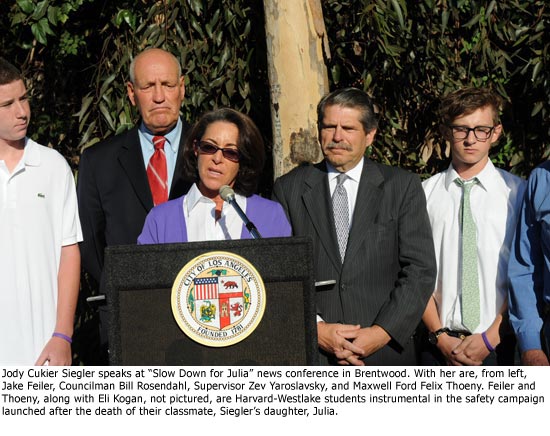
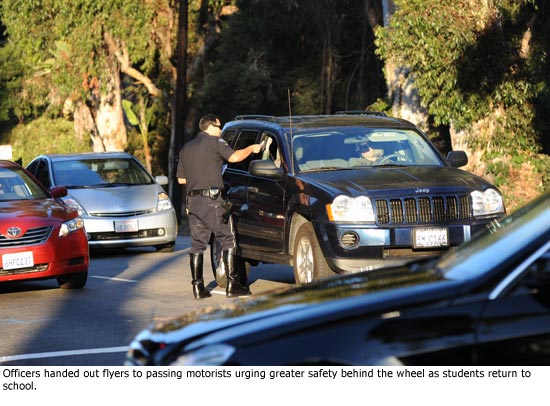

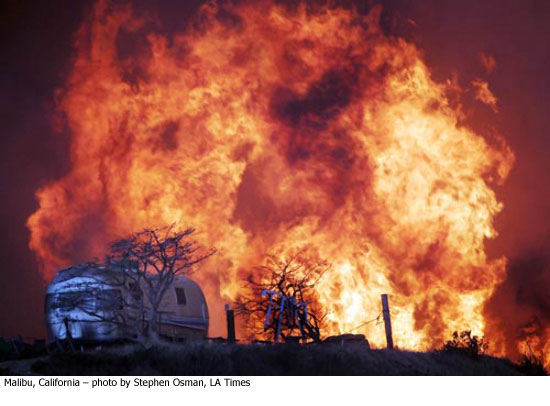
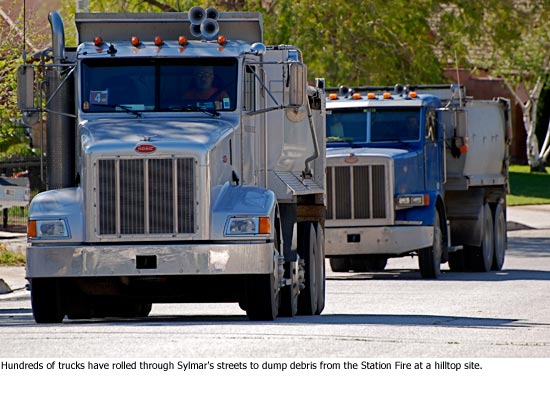
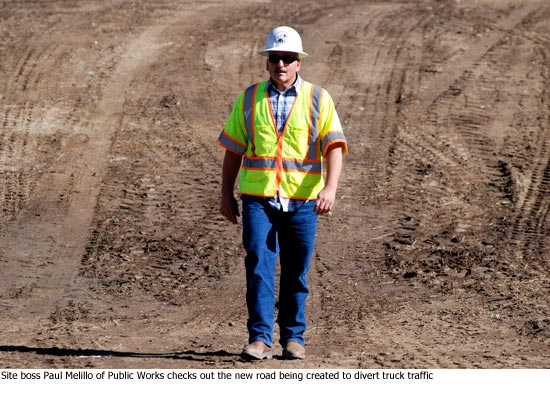
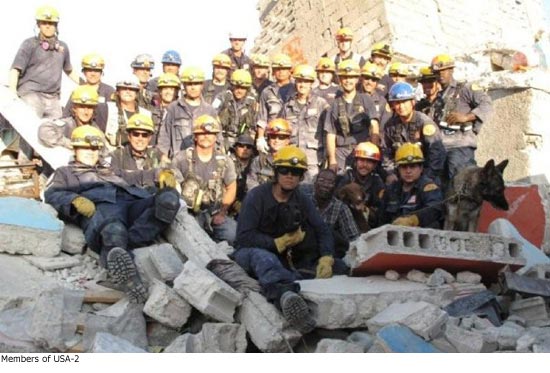














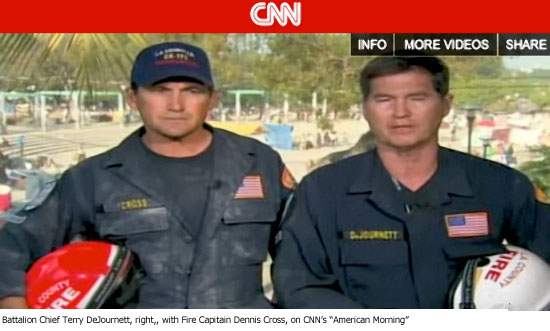
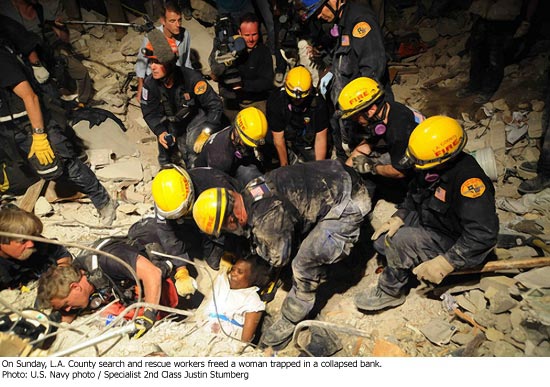
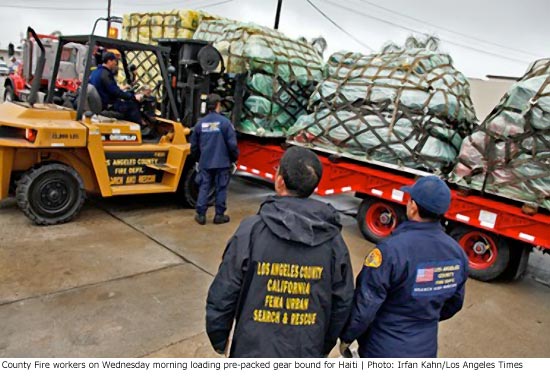
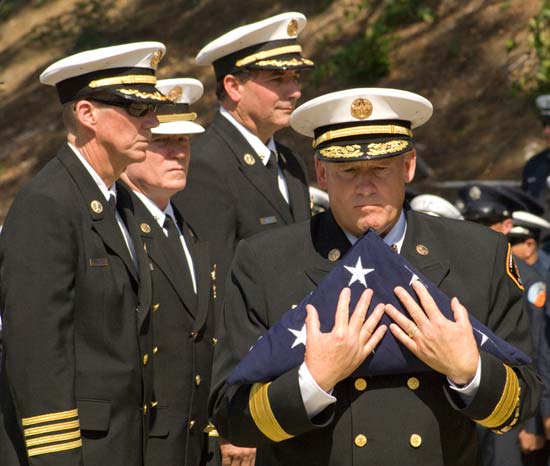
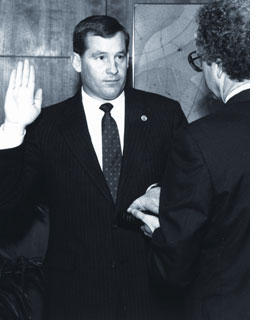












 405 bridge work causes a stink
405 bridge work causes a stink
